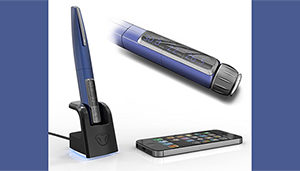Bill Welch, Phillips-Medisize

This is due to the ability for machine-to-machine communication through cloud computing and networks of data-gathering sensors, also known as the Internet of Things (IoT) IT market, to add efficiency and cost savings to a wide range of enterprise tasks. It is a market that is anticipated to grow from $8.2 billion to over $12.4 billion by 2018. The impact of this trend on the medical device industry could be significant, as more manufacturers are turning to digital connectivity, or connected health, as a way to improve the coordination and delivery of patient care.
To help ensure your product makes it to market with no – or minimal – delays, keep these things in mind when developing connected medical devices.
1. Development strategy/design consideration
The global delivery of healthcare has become more focused on medical outcomes, achieving results for patients and tying industry incentives to those results. With this paradigm shift, it is no longer sufficient to think about elements of the solution, such as connected services, shortly before market launch. Identify all the ways the device can support the patients and evaluate the system holistically. This ensures end-to-end solutions that are focused on patient outcomes and results.
Medicom Innovation Partner, a Phillips-Medisize company, has developed and applied a complete drug delivery strategy to help companies evaluate opportunities. The approach identifies all the says a device can support patients and lead to improved outcomes with four main aspects: differentiation, market execution, execution constraints, and device technologies.
2. Situation analysis/patient compliance
Many types of medication, for example, must be taken at intervals exactly as prescribed to work effectively. Patients who take such medication, along with their physicians and caretakers, face 2 basic tasks, which can become challenges depending on the variables at play:
- Complying with the dosing schedule
- Maintaining accurate records of dosing events
Consider a patient, instructed to regularly use an inhaler to treat symptoms of emphysema. Failure to comply with the prescribed dosing schedule limits the effectiveness of the treatment plan and can have potentially serious consequences for the patient’s health. If the patient’s physician had an accurate record of the patient’s dosing habits, he or she could use this to emphasize compliance and possibly avoid unnecessary complications or hospitalization.
Despite the advantages of connected devices, the space is still somewhat immature, with far less penetration than the consumer products market. But the potential benefits provided make the path worth pursuing.

